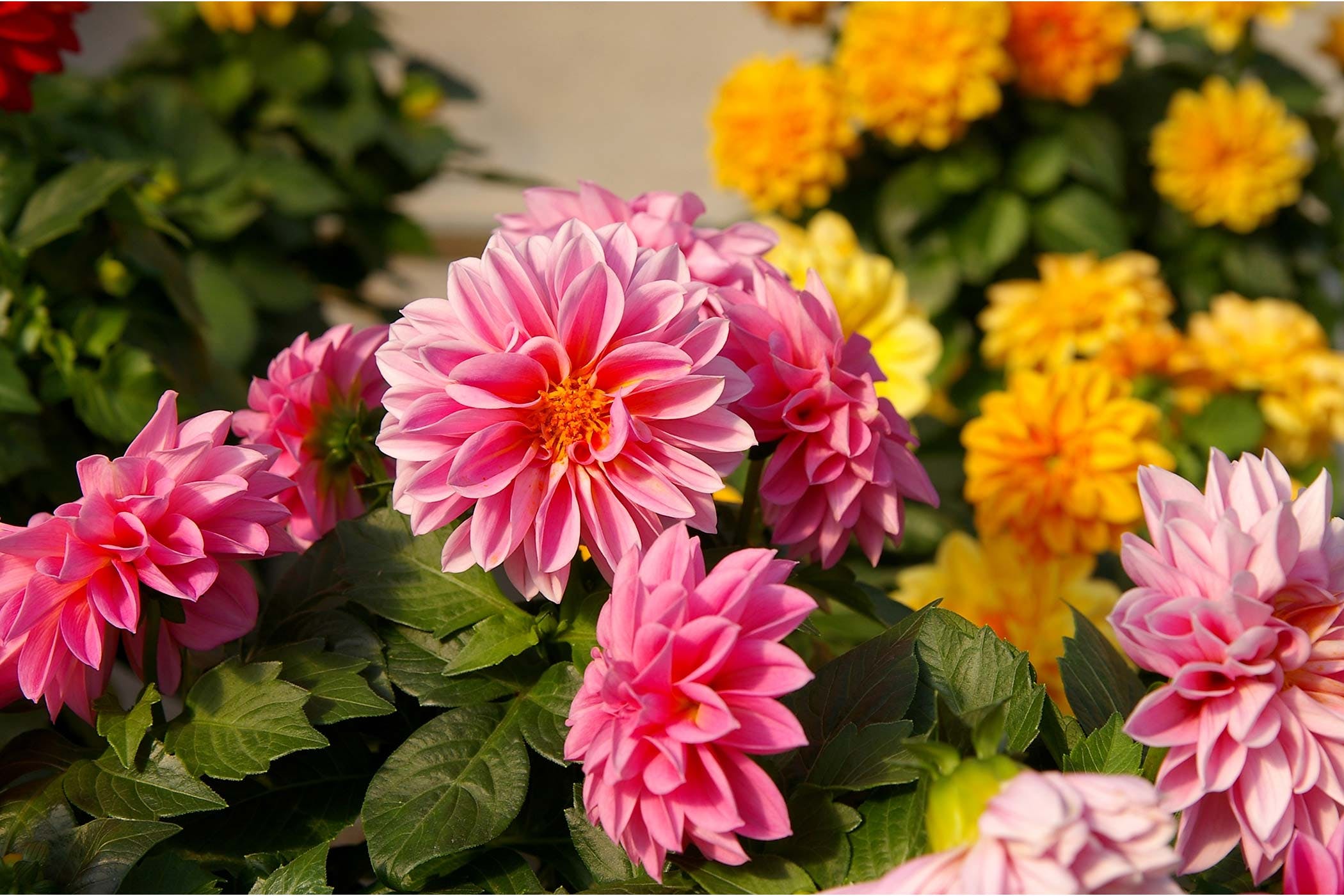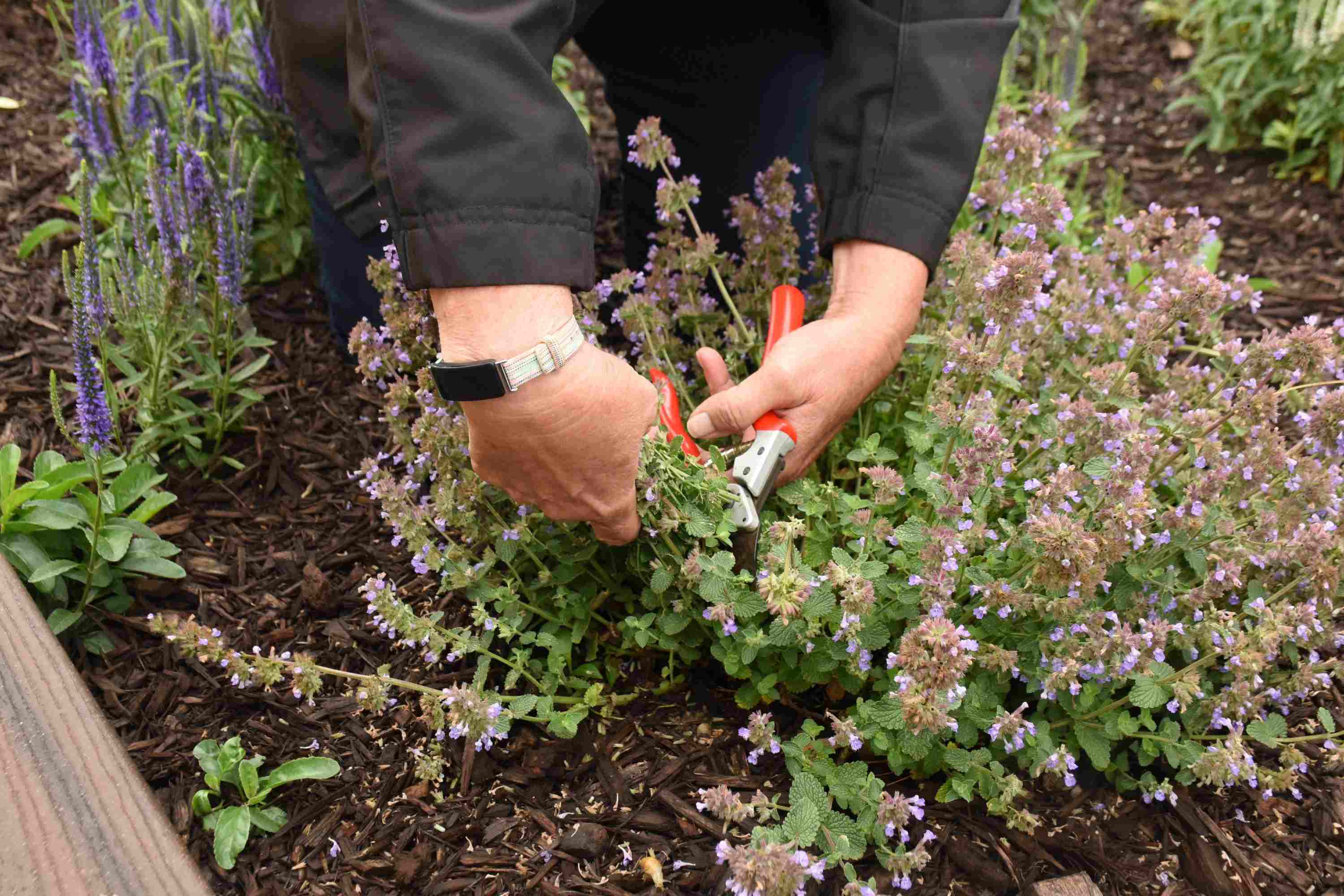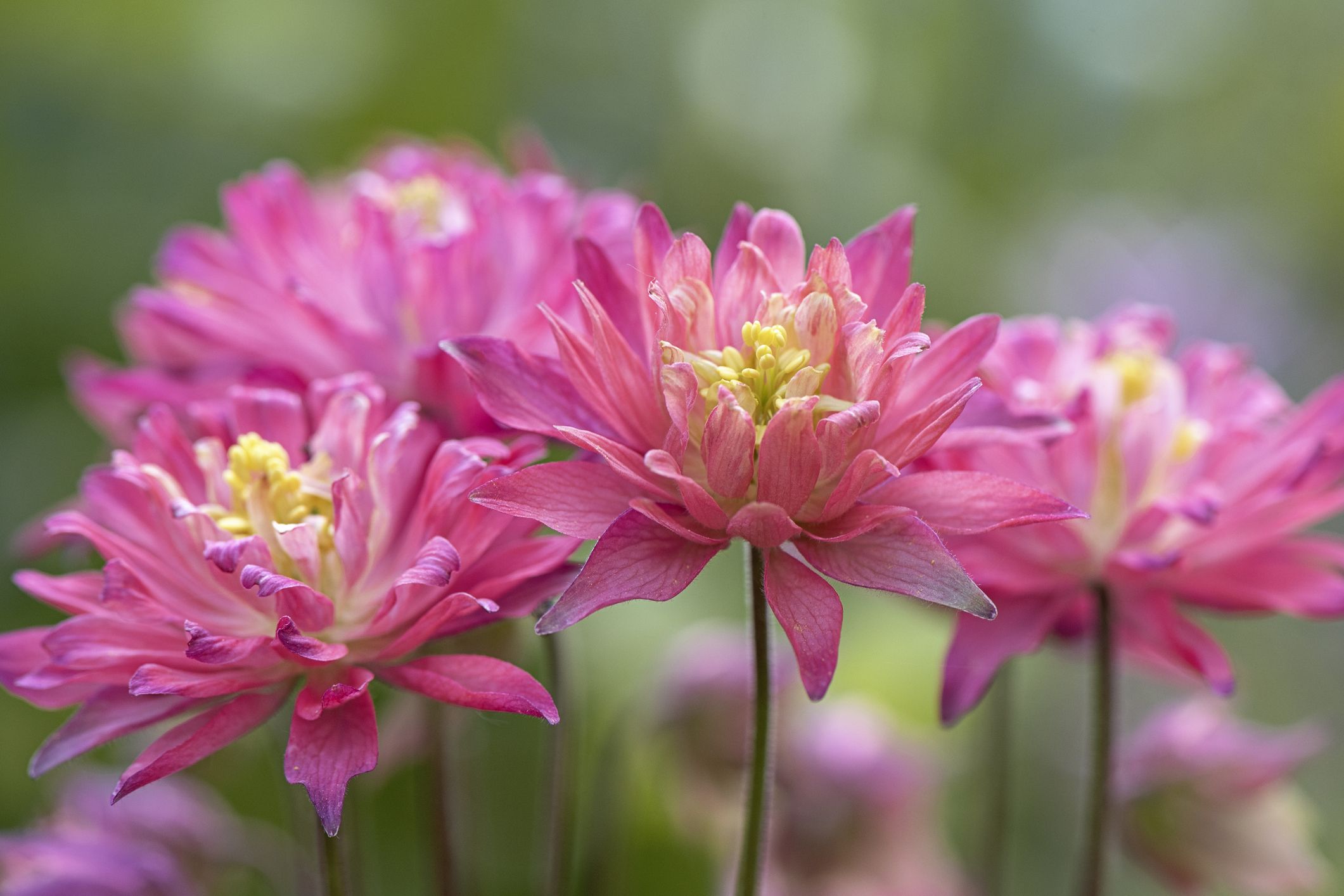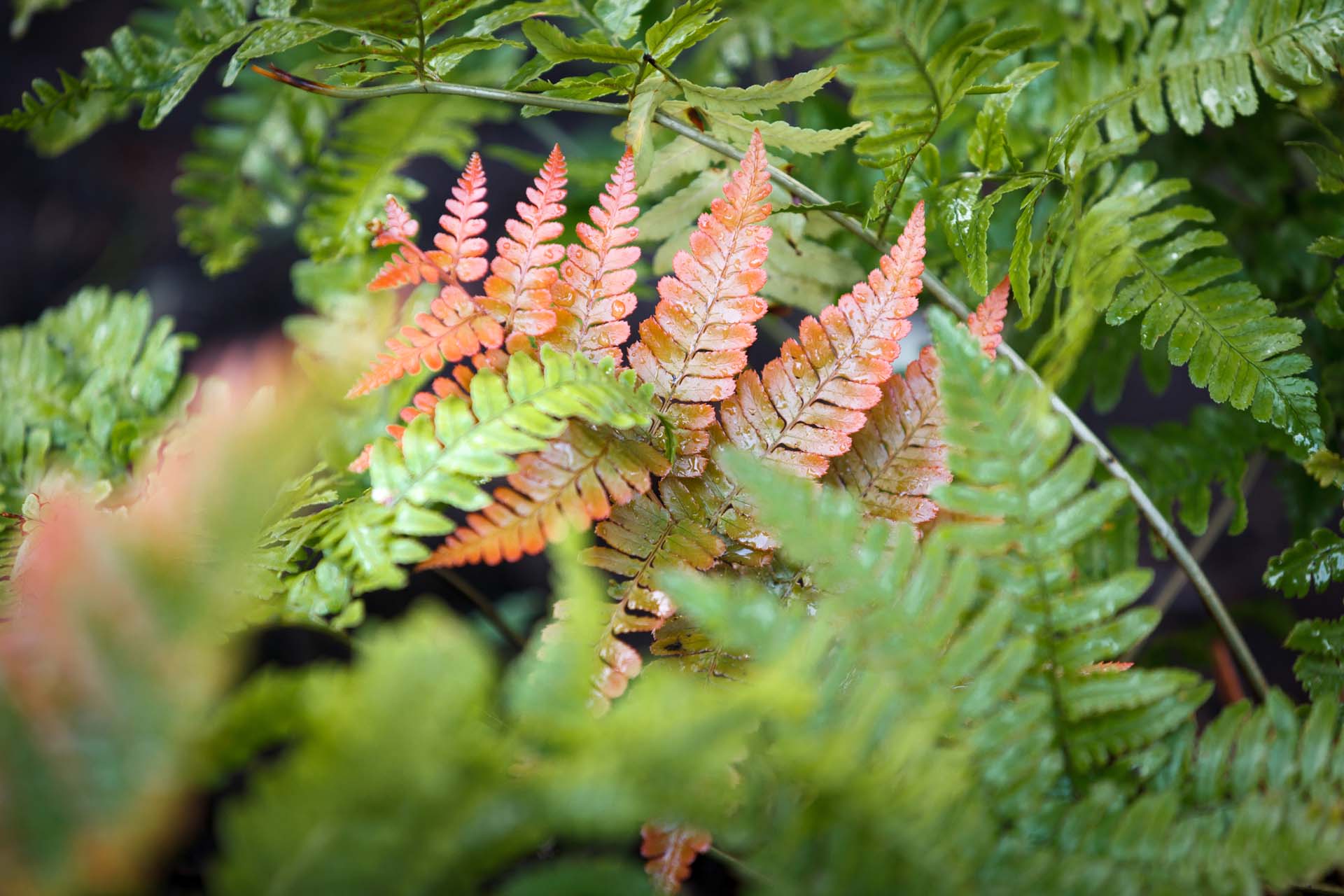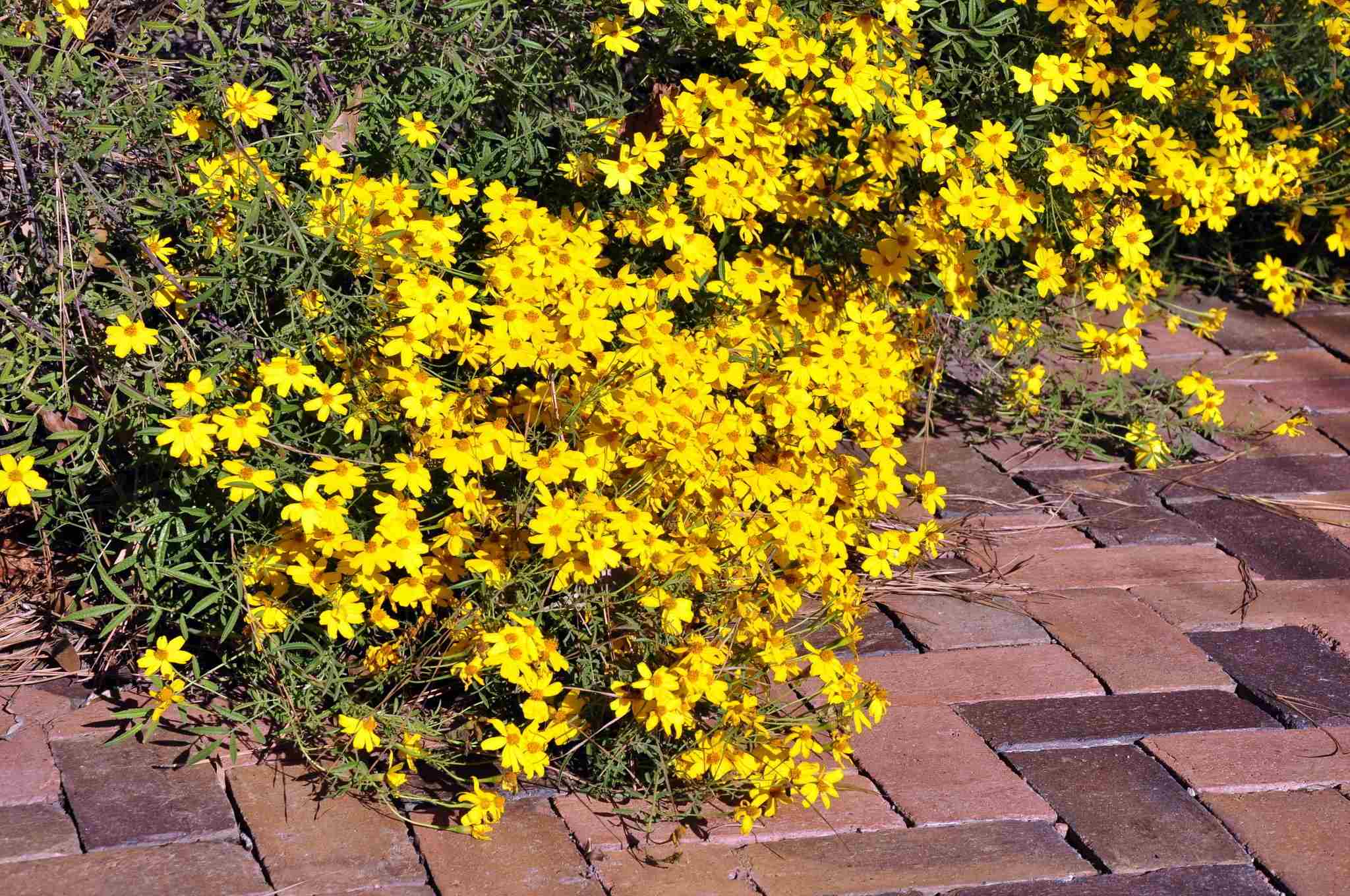Home>Types of Gardening>Edible Gardening>Which Herbs Are Perennials


Edible Gardening
Which Herbs Are Perennials
Modified: January 22, 2024
Discover which herbs are perennials for your edible gardening needs. Find the best perennial herbs to grow in your garden and enjoy fresh flavors all year round.
(Many of the links in this article redirect to a specific reviewed product. Your purchase of these products through affiliate links helps to generate commission for Chicagolandgardening.com, at no extra cost. Learn more)
Table of Contents
Introduction
Edible gardening is a rewarding and fulfilling hobby that allows you to grow your own food and connect with nature. Among the various types of edible plants, herbs are particularly popular for their versatility and aromatic flavors. While many herbs are annuals, needing to be replanted each year, there is a special group of herbs known as perennials that offer the convenience of regrowing year after year.
Perennial herbs are plants that have a lifespan of more than two years, meaning they will continue to grow and produce leaves, flowers, and seeds for multiple seasons. This characteristic makes them an excellent addition to any edible garden, as they provide a consistent and reliable supply of fresh herbs with minimal effort.
In this article, we will explore the world of perennial herbs, from their definition and common varieties to the benefits of growing them and how to care for them. Whether you are new to gardening or have an established edible garden, incorporating perennial herbs into your space can elevate your culinary adventures and add beauty to your landscape.
Definition of Perennial Herbs
Perennial herbs are a specific category of edible plants that have a longer lifespan compared to annual herbs. Unlike annuals, which complete their life cycle in a single growing season and need to be replanted each year, perennials are capable of regrowing year after year, providing a continuous supply of flavorful leaves, stems, and flowers. This unique characteristic makes them an ideal addition to any edible garden.
One of the key features of perennial herbs is their ability to survive the colder months and come back to life in the following growing season. Their roots remain alive underground, allowing them to endure winter conditions and resume growth when the weather becomes favorable again. This longevity sets them apart from annual herbs, which need to be replanted each year.
Perennial herbs can vary in size, ranging from compact plants like thyme and oregano to larger specimens like rosemary and sage. They come in a wide range of flavors and aromas, each with its own distinctive culinary uses. Some examples of popular perennial herbs include mint, chives, lavender, and lemon balm.
These herbs not only provide a continuous harvest but also contribute to the overall aesthetics of the garden with their beautiful foliage and sometimes even colorful flowers. They are versatile plants that can be grown in various settings, including herb gardens, vegetable beds, containers, or even as part of ornamental landscapes.
Due to their longer lifespan, perennial herbs are often seen as low-maintenance plants. Once established, they require less attention and care compared to annual herbs. However, it’s important to note that they still need regular watering, occasional pruning, and proper soil nutrition to thrive and continue producing an abundant harvest.
Now that we have a clear understanding of what perennial herbs are and their unique characteristics, let’s explore the different varieties and their benefits in more detail.
Common Perennial Herbs
When it comes to choosing perennial herbs for your garden, there is a wide selection of flavorful and aromatic options to consider. These herbs can enhance your culinary creations, add fragrance to your garden, and even have medicinal properties. Let’s explore some of the most common perennial herbs and their unique characteristics:
- Mint: Mint is a vigorous perennial herb that belongs to the Mentha genus. It is known for its refreshing scent and has a wide range of varieties, including peppermint, spearmint, and chocolate mint. Mint leaves are often used in teas, cocktails, desserts, and savory dishes.
- Chives: Chives are a popular herb belonging to the Allium family. They have narrow stalks that resemble green onion tops and boast a mild onion flavor. Chives are great for adding a fresh and mild onion taste to salads, soups, and various dishes.
- Lavender: Lavender is a beautiful perennial herb known for its fragrant purple flowers. It not only adds a lovely aroma but also has calming properties, making it a popular herb for teas, baked goods, and even homemade skincare products.
- Rosemary: Rosemary is a woody perennial herb native to the Mediterranean region. It has needle-like leaves and a strong pine-like scent. Rosemary is a versatile herb that pairs well with roasted meats, vegetables, bread, and even in infused oils.
- Sage: Sage is another perennial herb with gray-green leaves and a distinctive flavor. It is commonly used in stuffing, pasta dishes, and as a seasoning for roasted meats. Sage plants are known for their ornamental value, often adding a touch of elegance to the garden.
- Oregano: Oregano is a perennial herb with small, oval-shaped leaves. It is highly aromatic and commonly used in Mediterranean and Italian cuisine. Oregano adds a delicious flavor to pizzas, tomato-based sauces, soups, and more.
- Thyme: Thyme is a low-growing perennial herb with small leaves and a savory aroma. It is a staple in French and Mediterranean cooking and pairs well with roasted vegetables, grilled meats, and tomato-based dishes. Thyme is also appreciated for its ornamental value.
- Lemon Balm: Lemon balm is a perennial herb with bright green leaves that have a refreshing lemon scent. It is often used in teas, desserts, and as a garnish for salads and cocktails. Lemon balm is known for its calming properties and is a favorite among herbal enthusiasts.
These are just a few examples of the many perennial herbs available to gardeners. Experimenting with different varieties can not only add wonderful flavors and aromas to your culinary creations but also provide you with a vibrant and thriving garden.
Benefits of Growing Perennial Herbs
Growing perennial herbs in your garden offers numerous benefits that go beyond just providing fresh flavors and aromas to your dishes. Let’s explore some of the advantages of incorporating these long-lived herbs into your edible garden:
- Continual Harvest: One of the biggest advantages of perennial herbs is that they provide a continuous harvest. Once established, these herbs will regrow year after year, allowing you to enjoy a steady supply of fresh leaves, stems, and flowers without the need for replanting.
- Low Maintenance: Compared to annual herbs, perennial herbs are relatively low maintenance. Once they have settled into your garden, they require less attention and care. This makes them a great choice for gardeners who may have limited time or prefer a more hands-off approach to gardening.
- Aesthetic Appeal: Perennial herbs not only add flavor to your meals but also contribute to the overall beauty of your garden. With their attractive foliage, colorful flowers, and unique growth habits, they can enhance the visual appeal of your outdoor space, adding texture, height, and interest to your landscaping.
- Cost-effective: Growing perennial herbs can be cost-effective in the long run. Instead of constantly purchasing fresh herbs from the grocery store or relying on dried herbs, you can simply step into your garden and harvest what you need whenever you want. This can save you money over time while providing you with high-quality, homegrown ingredients.
- Encourages Pollinators: Many perennial herbs, such as lavender, rosemary, and thyme, produce attractive flowers that entice pollinators like bees, butterflies, and beneficial insects. By including these herbs in your garden, you can create an inviting habitat for these important pollinators, promoting biodiversity and supporting the overall health of your ecosystem.
- Perennial Borders and Groundcovers: Perennial herbs can be utilized as borders or groundcovers, helping to define and delineate different areas of your garden. Their compact growth habit and ability to spread can provide structure and visual interest to your garden beds or pathways.
- Year-round Beauty: While annual herbs may die off at the end of the growing season, perennial herbs retain their foliage, form, and often their color throughout the year. This means that even during the winter months, you can enjoy the beauty of these hardy herbs in your garden.
By growing perennial herbs, you not only enhance your culinary experiences with fresh flavors but also create a sustainable and visually appealing garden space. These herbs offer a multitude of benefits that cater to both your taste buds and the overall health of your garden ecosystem.
How to Grow Perennial Herbs
Growing perennial herbs in your garden is a rewarding experience that allows you to enjoy fresh flavors and aromas year after year. While each herb has its own specific requirements, there are some general guidelines to follow when it comes to cultivating perennial herbs:
- Site Selection: Choose a location in your garden that receives at least 6-8 hours of direct sunlight per day. Most perennial herbs thrive in well-draining soil, so ensure that the chosen spot has good drainage to prevent waterlogging.
- Soil Preparation: Prepare your soil by removing any weeds or grass and then loosen it with a garden fork or tiller. Amend the soil with organic matter, such as compost, to improve its fertility, moisture retention, and overall texture.
- Planting: Dig a hole that is slightly larger than the rootball of your herb plant. Place the plant in the hole, ensuring that the top of the rootball is level with or slightly above the soil surface. Backfill the hole with soil, gently firming it around the plant’s base. Water the herb thoroughly after planting.
- Watering: Proper watering is essential for the successful establishment and growth of perennial herbs. Water the plants deeply but infrequently, allowing the soil to dry out slightly between waterings. Avoid overwatering, as this can lead to root rot and other moisture-related issues.
- Mulching: Apply a layer of organic mulch, such as straw or wood chips, around the base of your herbs to help conserve moisture, suppress weeds, and regulate soil temperature. Leave a small gap around the stem to prevent excessive moisture buildup.
- Fertilization: Perennial herbs generally do not require heavy fertilization. However, it can be beneficial to incorporate organic fertilizers, such as compost or well-rotted manure, into the soil before planting. Avoid over-fertilization, as this can lead to excessive leaf growth with reduced flavor intensity.
- Pruning: Regular pruning helps to promote bushier growth and maintain the shape of your perennial herbs. Remove any dead or damaged stems and flowers. Pinch back the growing tips of the plant periodically to encourage branching and a fuller appearance.
- Pest and Disease Management: Keep an eye out for common pests such as aphids, spider mites, and snails, and take appropriate measures to control them. Practices such as companion planting, proper air circulation, and regular inspection can help prevent pest and disease infestations.
- Winter Care: Depending on your climate, some perennial herbs may require protection during the winter months. Apply a layer of mulch around the base of the plants to insulate the roots and protect them from freezing temperatures. In colder regions, you may need to bring potted herbs indoors or cover them with frost blankets.
By following these guidelines and providing the necessary care, you can ensure the healthy growth and longevity of your perennial herbs. Remember to tailor your approach to the specific requirements of each herb, as some may have unique needs regarding soil pH, water requirements, or sunlight exposure.
Propagation Methods for Perennial Herbs
Propagating perennial herbs is an economical and rewarding way to expand your garden and share your favorite plants with others. There are several methods of propagating these herbs, both from seeds and plant cuttings. Let’s explore some common propagation methods for perennial herbs:
- Seeds: Many perennial herbs can be grown from seeds. Start by sowing the seeds indoors in trays or pots filled with seed starting mix, following the recommended planting depth and spacing for each herb. Keep the soil moist and provide sufficient light and warmth. Once the seedlings have grown a few sets of true leaves, they can be transplanted into larger pots or directly into the garden.
- Division: Division is a popular propagation method for perennial herbs that produce clumps or crowns, such as chives, mint, and thyme. To divide a plant, carefully dig it up and separate the root ball into smaller sections, ensuring that each new division has its own set of roots and shoots. Replant the divisions in prepared soil, water thoroughly, and provide the necessary care.
- Cuttings: Taking stem cuttings is another effective way to propagate perennial herbs. Select healthy and non-flowering stems and cut them from the parent plant just above a leaf node. Remove the lower leaves, dip the cut end in a rooting hormone (optional), and plant the cutting in a well-draining potting mix. Keep the soil moist and provide indirect light. Once the cutting develops roots, it can be transferred to a larger container or directly into the garden.
- Layering: Layering is a propagation method suitable for herbs with flexible or trailing branches, such as rosemary and thyme. Choose a low-hanging stem, wound it slightly, and bury it in the soil while keeping the tip exposed. Secure the buried portion with a small stake or stone. Over time, roots will develop at the buried section of the stem. Once rooted, cut the new plant from the parent and replant it in a separate container or desired location in the garden.
- Offshoots: Some perennial herbs, like lemon balm and mint, produce offshoots or runners that can be detached and replanted. These offshoots are young plants that emerge from the base of the parent plant or along underground stems. Gently dig up the offshoots, ensuring they have roots attached, and transplant them to their new location. Water thoroughly and provide appropriate care to help them establish in their new environment.
Experiment with different propagation methods to find the ones that work best for you and the specific herbs you want to propagate. Remember to provide adequate care, including proper watering, light, and soil conditions, to promote successful root establishment and encourage healthy growth in your propagated perennial herbs.
Harvesting and Using Perennial Herbs
Harvesting your perennial herbs at the right time ensures that you capture their maximum flavor and aroma. The method of harvesting can vary depending on the herb and the specific parts you want to use. Let’s explore some general guidelines for harvesting and using perennial herbs:
- Leafy Herbs: For herbs like mint, basil, and sage, you can start harvesting leaves as soon as the plant has enough growth. Harvest the outer leaves first, leaving the inner ones to continue growing. Use sharp scissors or pruning shears to cut the leaves at the stem junction, just above a set of leaves or node.
- Stem Herbs: For herbs like rosemary, thyme, and oregano, you can harvest both the leaves and the woody stems. Trim the stems with sharp pruners, cutting them back to a healthy growth point. You can use the harvested stems as flavoring in recipes or dry them for later use.
- Flowering Herbs: Some perennial herbs, like lavender and chamomile, are prized for their flowers. Harvest the flowers when they are fully open and at their most vibrant. Gently pinch or cut the flowers from the plant, leaving a small stem attached. You can use the flowers fresh or dry them for potpourri, herbal teas, or homemade body care products.
- Timing: Harvest herbs in the morning after the dew has evaporated but before the heat of the day. This is when the essential oils in the leaves and flowers are at their peak concentration, providing maximum flavor and aroma.
- Storage and Preservation: To preserve your harvested perennial herbs, there are several methods you can use. Air-drying is the simplest method, where you tie small bunches of herbs together and hang them in a well-ventilated, dry location. You can also dry herbs in a dehydrator or on a low heat setting in the oven. Another method is freezing, where you chop the herbs and store them in ice cube trays with water or oil. Alternatively, you can also make herb-infused oils or vinegars.
- Using Perennial Herbs: Perennial herbs offer endless possibilities in the kitchen. They can be used in fresh or dried form to add flavor to a wide range of dishes, including soups, stews, sauces, marinades, salads, and desserts. Experiment with different combinations of herbs to create your own signature dishes.
Remember to use caution when harvesting perennial herbs to avoid damaging the plants or inhibiting their future growth. Avoid overharvesting from a single plant, as this can weaken it and affect its ability to regrow. Instead, harvest in moderation and allow the plant to continue thriving.
By properly harvesting and utilizing your perennial herbs, you can enjoy their freshness, flavors, and aromas throughout the year, elevating your culinary creations and adding a touch of nature to your meals.
Best Companion Plants for Perennial Herbs
Companion planting is an age-old gardening technique that involves growing plants together for mutual benefits. When it comes to perennial herbs, there are several companion plants that can enhance their growth, deter pests, attract pollinators, and provide a visually appealing garden. Let’s explore some of the best companion plants for perennial herbs:
- Marigolds: Marigolds are known for their strong aroma, which helps repel pests like aphids and nematodes. Planting marigolds near perennial herbs can help protect them from common garden pests while adding a splash of vibrant color to the garden.
- Nasturtiums: Nasturtiums are not only visually striking with their bright flowers but also act as a natural trap for aphids. By planting nasturtiums alongside perennial herbs, you can divert aphids away from your herbs and limit potential damage to their foliage.
- Lavender: Lavender is a versatile herb that serves as an excellent companion plant for many perennial herbs. It attracts pollinators like bees and butterflies, promoting biodiversity in the garden. Additionally, the strong scent of lavender can help deter pests like moths and fleas.
- Borage: Borage is a beneficial companion plant for perennial herbs as it attracts pollinators and beneficial insects. Its beautiful blue flowers add visual appeal to the garden, and the leaves are edible and can be used in salads or as garnishes.
- Basil: Basil is a popular annual herb that is often grown alongside perennial herbs. It is believed to enhance the flavor and growth of its neighboring plants. Basil also acts as a natural pest repellent, especially against mosquitoes and flies.
- Chamomile: Chamomile is a herb that complements many perennial herbs by attracting beneficial insects such as hoverflies and parasitic wasps. It also makes a soothing herbal tea and can be used as a natural plant tonic when brewed and applied to the foliage of nearby plants.
- Thyme: Thyme is not only a versatile culinary herb but also an excellent companion plant. It helps repel cabbage worms, aphids, and other pests that may attack nearby veggies and herbs. Interplanting thyme with perennial herbs can provide a natural pest control barrier.
- Onions and Garlic: Onions and garlic have natural insect-repellent properties, making them beneficial companion plants for perennial herbs. They can help deter pests like aphids, spider mites, and slugs. Planting them in close proximity to perennial herbs can provide a protective shield.
These are just a few examples of companion plants that can thrive alongside perennial herbs in the garden. Each companion plant offers unique benefits and can contribute to the overall health and well-being of your herbs.
Remember to consider the specific needs and growth habits of both the perennial herbs and companion plants when planning your garden. By incorporating compatible companions, you can create a harmonious and thriving garden ecosystem.
Common Pests and Diseases for Perennial Herbs
While perennial herbs are generally resilient plants, they can still fall victim to a variety of pests and diseases. Being aware of these common issues can help you identify and address them promptly, ensuring the health and productivity of your perennial herbs. Let’s explore some of the common pests and diseases that can affect perennial herbs:
- Aphids: Aphids are small, soft-bodied insects that suck the sap from plant leaves, causing them to wilt and deform. They can multiply rapidly and infest the foliage of perennial herbs. Regularly inspect your plants and employ methods such as spraying a strong hose stream or using insecticidal soap to control aphid populations.
- Spider Mites: Spider mites are tiny pests that infest the underside of leaves, causing yellowing, stippling, and webbing. They thrive in dry and dusty conditions. To control spider mites, regularly mist the foliage of your perennial herbs and introduce predatory mites or ladybugs into your garden to eat the spider mites.
- Slugs and Snails: Slugs and snails feed on the leaves and young shoots of perennial herbs, leaving behind irregular holes and slimy trails. They are most active at night and thrive in damp conditions. To safeguard your herbs, create barriers using copper tape, handpick the pests, or use organic slug control methods.
- Powdery Mildew: Powdery mildew appears as a white powdery coating on the leaves of plants, leading to stunted growth and distorted foliage. This fungal disease thrives in humid conditions with poor air circulation. To prevent powdery mildew, provide adequate spacing between plants, ensure good airflow, and apply organic fungicides if necessary.
- Root Rot: Root rot is a fungal disease that affects the roots of perennial herbs, causing wilting, yellowing leaves, and stunted growth. It occurs in poorly drained soils and overwatered conditions. To prevent root rot, ensure proper drainage and avoid overwatering. If root rot has already occurred, remove affected plants and improve soil drainage.
- Leaf Spot: Leaf spot is a common fungal disease characterized by dark spots, yellowing, and leaf drop. It thrives in moist and humid conditions. To manage leaf spot, promptly remove and destroy affected leaves, ensure proper spacing, and apply organic fungicides if necessary.
- Rust: Rust is a fungal disease that causes orange or brownish pustules to form on the leaves and stems of affected plants. It is favored by high humidity and can spread rapidly. To control rust, remove and destroy infected plant parts, ensure good airflow, and apply organic fungicides if needed.
- Herb-Specific Pests: Some perennial herbs may have herb-specific pests. For example, rosemary can be susceptible to rosemary beetles, while mint can attract mint flea beetles. Regularly inspect your herbs for any signs of pest infestation and take appropriate measures to control them.
It’s important to monitor your perennial herbs regularly for signs of pests or diseases to catch any issues early on. Maintaining good garden hygiene, providing proper watering techniques, and improving air circulation can greatly reduce the risk of pest and disease problems.
If necessary, consult with a local gardening professional or extension service for specific pest and disease management strategies tailored to your region and perennial herb varieties. By staying vigilant and taking proactive measures, you can keep your perennial herbs healthy and thriving.
Conclusion
Perennial herbs are a wonderful addition to any edible garden, providing a continuous harvest of fresh flavors and aromas year after year. By understanding the definition of perennial herbs and exploring common varieties such as mint, chives, lavender, and thyme, you can choose the herbs that best suit your culinary preferences and garden space.
Growing perennial herbs offers various benefits, including a continual harvest, low maintenance requirements, aesthetic appeal, cost-effectiveness, and support for pollinators. By following the proper guidelines for planting, watering, fertilizing, pruning, and protecting against pests and diseases, you can ensure the healthy growth of your perennial herbs.
Harvesting perennial herbs at the right time, storing them properly, and utilizing them in your culinary creations can elevate your dishes and provide a sense of satisfaction knowing that you have grown your own ingredients. By exploring companion planting options and being aware of common pests and diseases, you can create a diverse and thriving garden ecosystem for your perennial herbs.
In conclusion, perennial herbs offer an abundant and flavorful addition to any edible garden. With their ability to regrow year after year, they provide a sustainable source of fresh herbs and add beauty to your outdoor space. So, start incorporating perennial herbs into your garden and enjoy the satisfaction of growing and using these delightful plants for years to come.

